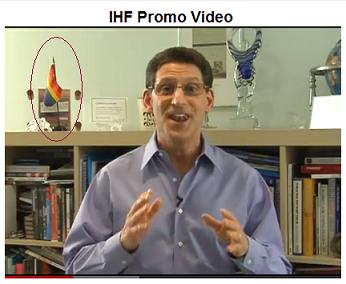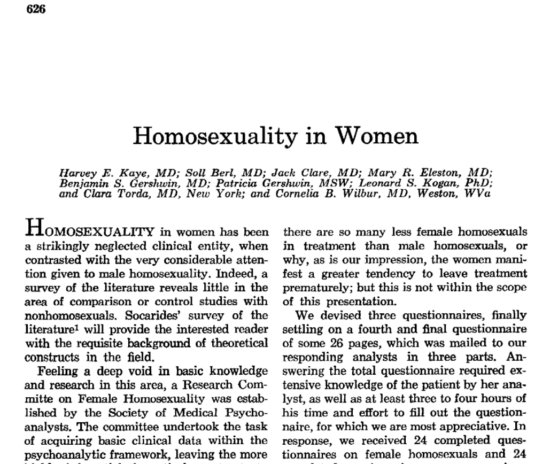Julie Hamilton says NARTH is not homophobic with a straight face.
The reporter should have asked why they had non-researchers Michael Brown and Sharon Slater speak.
Category: reparative therapy
Local media coverage of the NARTH conference
The Phoenix Fox affiliate filed a report late yesterday. According to the reporter NARTH claims to be a non-religious group.
NARTH: Gays Can Get Therapy to Become Straight: MyFoxPHOENIX.com
Perhaps Julie Hamilton did not say that NARTH was non-religious but the reporter said:
NARTH denies it has anything to do with Christian groups who believe homosexuality can be reversed.
To which, Julie Hamilton said.
“NARTH is a scientific organization. We are dedicated to understanding the research behind the issue of homosexuality,” said Hamilton.
As a former participant in NARTH conferences, I can say via first hand information that religious groups are well represented at NARTH. NARTH has always been considered a partner of religious groups such as Focus on the Family.
Also, who recommends NARTH besides religious groups? In what setting is someone likely to learn of the existence of NARTH? And as noted here recently, NARTH’s membership is made up primarily of non-professionals. Only about a quarter of the membership have professional credentials.
Furthermore, if NARTH is a scientific organization dedicated to research, then why have two anti-gay religious activists been given speaking time?
So maybe Julie Hamilton didn’t actually say NARTH has nothing to do with Christian groups, but if she did or implied it, I suspect that would be a surprise to at least three-quarters of NARTH members.
A new test of orthodoxy
Yesterday, the information arm of the American Family Association, OneNewsNow published an article about my views on change of sexual orientation. The information on the matter came from Peter LaBarbera who said
“But in the last few years, he’s basically become a pro-gay advocate who discredits the idea of change for most homosexuals,” LaBarbera explains. “He grants the idea that they can change, but he says change is very rare.
“So effectively, Warren Throckmorton has become a very useful advocate for the homosexual side because he can claim to be an evangelical and yet he’s undermining scriptural truth.”
As I understand this argument, I am wrong to claim to be an evangelical because I believe that categorical change in sexual attractions, especially for men, is rare. In addition such a belief is in itself “pro-homosexual advocacy.”
LaBarbera adds that
Christians know people can leave the lifestyle, and that through Christ, many thousands have. So he says Throckmorton’s message — that change is near impossible — is contrary to Christian thinking.
Here we have a test of orthodoxy – something that must be believed in order to be considered a Christian. In my tradition, faith in the redeeming mission of Christ is the test of faith. However, in the new orthodoxy of some in the Christian right, one must believe certain things about gays in order to be consider a Christian.
On the points raised by the ONN article, I observe that LaBarbera conflates behavior and inclination. He says I don’t think people can “leave the lifestyle” because I think categorical change of sexual attractions is rare and complex. While his description of behavior change is crude and stereotypical, I disagree with his assessment of me. I do believe that people change their behavior. They do so for a variety of reasons but in the context of this controversy, some do in order to seek conformity to their religious beliefs. That this happens is not in doubt by any researcher, pro-gay or not, that I know. The APA in their 2009 Task Force report acknowledged this and even noted that finding congruence can lead to certain positive outcomes.
However, gay and bisexual people who change their behavior infrequently lose their same-sex attractions, no matter how earnestly they pray. In my work as well as other studies, heterosexually married gay and lesbian people do not demonstrate change in attractions on average, even as they demonstrate devotion to their marriages. My critics can keep on criticizing but they have not been able to address the evidence which does not cut in their favor.
If I need to apologize for something, it is that I misled evangelicals for several years on the matter of sexual orientation. I did not intend to do so. When I made the documentary I Do Exist, I really believed the stories told. I know the people making the video did as well. I believed my clients; I believed people who told me they changed completely. In hindsight, I acknowledge that my work was complicated by the culture war. I now think the culture war is a significant stumbling block for the church.
From that time, there are a handful of people who continue to say they have changed in a comprehensive way. Many however, have acknowledged that their attractions have shifted within a range but have not really changed from one category to another. My view is that these stories are all interesting and that I desire to take people where they are and just work out a way that helps them live with integrity.
Who knows, maybe I will shift my views in different ways in the future. However, I hope it will be in response to evidence, not in order to fit into a man made definition of orthodoxy. In the mean time, I invite critics to simply deal with the evidence.
International Healing Foundation comes out?
Or something.
Richard Cohen’s International Healing Foundation has re-invented itself as a LGBTQU (U for unwanted) organization on a new website called Coming Out Loved.
On Coming Out Loved, gay affirming people can find a page full of LGB resources as well as an apology from Cohen:
We at IHF wish to offer a sincere, heartfelt apology to everyone in the LGBTQ community who may have been hurt by our message of “change.” As the director of IHF, I apologize and ask your forgiveness. I did not realize that by stating, “Change is Possible,” some would be offended. That was the furthest thing from my heart and mind. To think that our message of “change” would cause further pain to LGBTQ youth and adults is painful to imagine … I am deeply and profoundly sorry.
Really? Is this a sign of the apocalypse?
Whatever it is, I doubt it is going very far. The website also has the old references to same-sex attraction being caused by environment and family background, and to treatment to resolve “unwanted same-sex attraction.” NARTH’s protocol for change therapy is there along with the old list of reparative therapists for referral. Cohen is still offering his book Coming Out Straight, one of the most direct promotions of the change paradigm ever. Moreover, Chris Doyle is speaking this weekend at the NARTH conference, along with a speaker who promotes criminalization of homosexuality.
Perhaps I am cynical, but the changes just look like business as usual along with a parody of gay affirming therapy.

But then again, in the promo video for the new attitude, there is a rainbow flag. (Note the flag circled in the screen cap to the left).
I am looking forward to seeing reaction from AFTAH, PFOX, Liberty Counsel, JONAH and the like.
Seriously, if the IHF crew want to be taken seriously, they need to explain more about how and why they are expecting people to trust them. Also, if the same touch therapy and pillow beating protocols are on the table, then taking a neutral stance is still not enough to address concerns about their work.
Psychoanalyst disavows study of lesbians; questions the Bieber study
Reparative therapists consider the 1962 Bieber study to be a landmark investigation of the psychodynamics of male homosexuality. The study authors claimed to find evidence for the role of weak, distant fathers and overly protective mothers in the development of homosexuality in their patients. They also claimed that 27% of the patients in the study were cured of their homosexuality.
Four years later, in 1967, a companion study on lesbians was published in the Archives of General Psychiatry. Using the same methodology and one of the same co-authors (Cornelia Wilbur), the Society for Medical Psychoanalysis sought to explore the factors involved in the causing and curing lesbians. The lead author of that study was psychoanalyst Harvey Kaye.
Today, I talked to Dr. Kaye and asked him about his study and what he thought about his findings now. At the time, Kaye’s team reported that the fathers of lesbians were puritanical and discouraged sex play with boys (sounds like evangelical dads). Generally, Kaye’s team put the spotlight on the fathers rather than mothers. Kaye’s group also reported that 50% of the lesbian clients were significantly changed via psychoanalysis.
Today, in conversation with me, Dr. Kaye discredited his results.
“I disavow the validity of the study,” Kaye said. “I don’t agree now with what we wrote.”
He added, “Frankly, I haven’t the vaguest idea what causes homosexuality in men or women, although I lean toward intrauterine events.”
Kaye explained that he has treated numerous gays and lesbians and that his experiences had influenced his current views.
About Irving Bieber’s views on the origins of male homosexuality, Kaye said, “I disagree with Bieber’s views violently. He was one of the last ones to hold on to the idea of the role of the mother and father.” Referring to Bieber’s methodology of relying on the reports of psychoanalysts, Kaye said, “He knew what he wanted to find before he did his study.”
The Kaye study is one of the psychoanalytic reports referenced in NARTH’s review of past research on change of orientation. The introduction to the review says:
In the clinical and scholarly literature over the past 125 years, mental health professionals document many different ways to assist men and women to successfully change from a homosexual to a heterosexual orientation. (NARTH, 2009, p. 19)
The NARTH report then briefly describes Kaye’s 1967 article:
Kaye et al. (1967) sent 26-page surveys to more than 150 psychoanalysts who saw homosexual women in their practice, and received back 24 completed surveys. Eight of the 15 cases that were reported to be in the “homosexual range” (Kinsey scores of 4-6) at the onset of treatment had shifted to a Kinsey score of 0 (exclusively heterosexual) either at termination of treatment or when the analyst filled out the survey. Kaye et al. concluded, “Apparently at least 50% of them can be helped by psychoanalytic treatment” (p. 633). (NARTH, 2009, 23)
Or not.
Dr. Kaye’s current evaluation throws more doubt on NARTH’s methodology of reporting old research as “historically state of the art” (NARTH, 2009, 37). There is reason to question that allowing psychoanalysts to fulfill their own prophecies was ever state of the art. In any case, Dr. Kaye’s candor is one of many reasons to remain skeptical of the 125 years of research trusted by NARTH.
